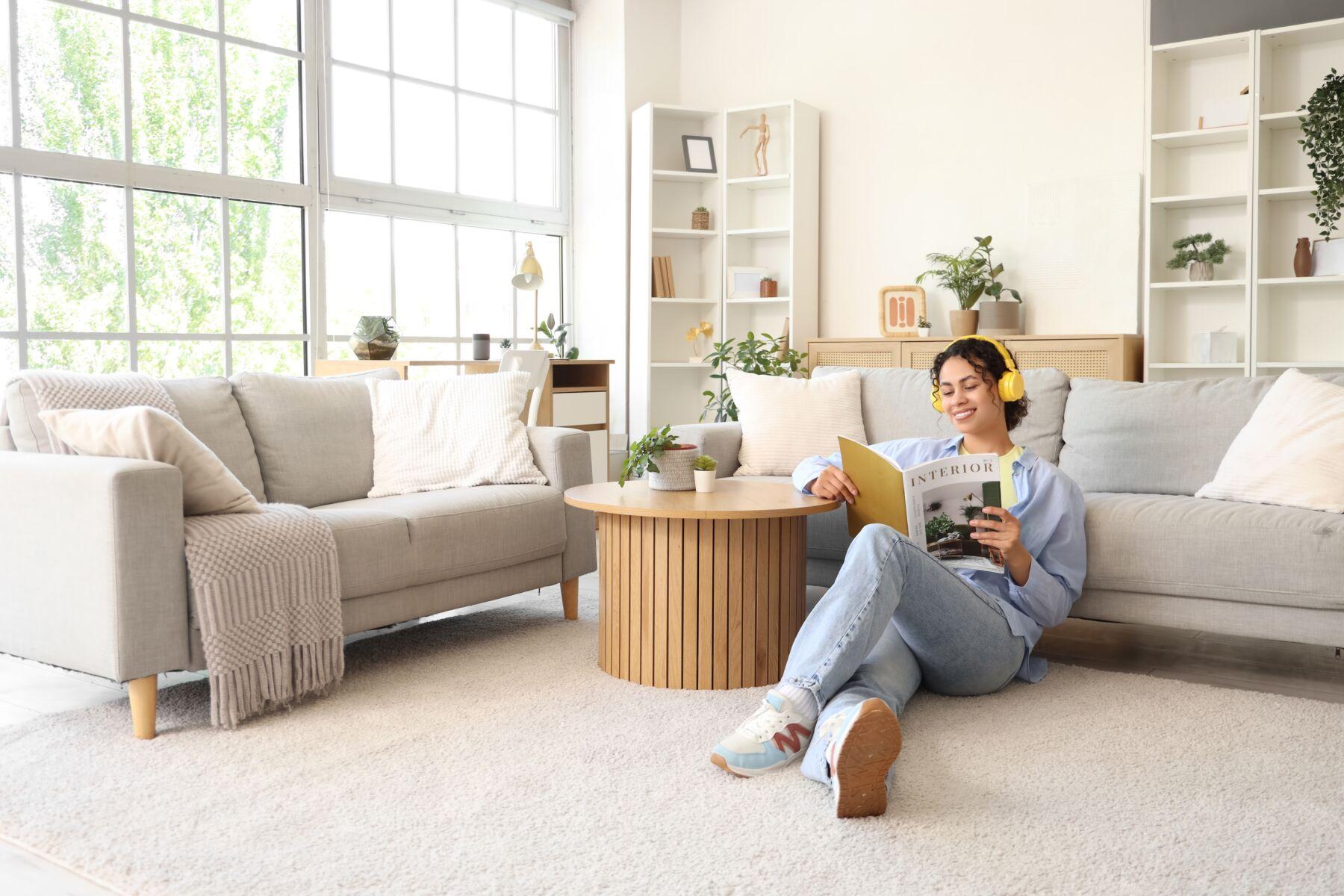Shared living can be one of the most rewarding ways to save money, build community, and access housing that fits your budget. But just like any housing arrangement, it comes with its own rhythms and responsibilities. Taking care of your mental and physical health is the key to making the most of the experience.
At PadSplit, we believe that a comfortable, affordable, and supportive home is the foundation for thriving in other areas of life. With the right habits and mindset, shared living can actually make it easier to live well. Here are some practical ways to stay balanced while renting a room in a shared living home.
Create a healthy daily routine
In a shared home, people often work different schedules. Some members study late, others start early, and many balance long or overnight shifts. Building a daily routine can help you feel more grounded, no matter what’s happening around you.
Many people find that sticking to regular habits improves focus, reduces stress, and supports better sleep. A few ideas to try:
- Consistent rest: Use your private, furnished room as your retreat. Keep it dark and quiet during rest hours and take advantage of PadSplit’s quiet hours (11 PM–9 AM) to protect your downtime. Students especially appreciate these quiet hours when preparing for exams.
- Movement: You don’t need an expensive gym membership to stay active. Free fitness apps, YouTube workout channels, or nearby parks can make exercise more affordable and accessible. Even 20 minutes of walking daily can boost energy.
- Balanced meals: Planning grocery trips and cooking times can help you avoid stress in shared kitchens. Meal-prep basics, like rice, beans, eggs, and frozen vegetables, can go a long way in fueling your body affordably.

Use your private space as a sanctuary
One of the unique benefits of PadSplit compared to traditional roommate setups is having your own lockable, private room. This space is more than just where you sleep; it’s your personal sanctuary.
Decorating with renter-friendly touches like removable wall art, string lights, or a small plant can help make the space feel more personal. Many members use their rooms for more than rest: journaling, reading, or practicing mindfulness before bed can create a calming environment that balances out the social energy of shared living.
Think of your room as a “reset button.” By giving yourself a space where you can recharge, you’ll be better prepared to enjoy the benefits of living in a community.
Communicate with housemates
Shared living is often easier and more enjoyable when everyone communicates clearly. Respectful conversations about kitchen use, cleaning routines, or quiet needs can prevent misunderstandings and build trust.
Some members find it helpful to set up a group chat for their household so everyone can share reminders or coordinate shared chores. Others rely on their PadSplit’s house rules as a neutral framework, which can be especially useful if conversations feel uncomfortable.
If you’d like more guidance on setting boundaries with housemates, check out our post on healthy roommate boundaries.
Take advantage of PadSplit’s structure
In many shared living situations, house rules are unclear or left up to chance. PadSplit removes that uncertainty by providing default house rules and membership guidelines that every member agrees to. Rules around things like guests, quiet hours, and cleaning give you more predictability and peace of mind.
This structure helps members, whether they’re night-shift workers who need to sleep during the day, students who need quiet to study, or people in transition after a move, focus on their goals without distractions.
Another benefit of PadSplit’s model is financial health. Because your weekly payment covers rent, Wi-Fi, and utilities, you can spend less time juggling bills and more time focusing on your personal well-being. Predictability with payments reduces financial stress, which is closely tied to both mental and physical health.
Build supportive connections
Community can be one of the biggest benefits of shared living. Even small interactions, like sharing a meal, checking in with a housemate, or chatting in the kitchen, can ease stress and help you feel connected.
If you’re looking to expand your social circle beyond your home, many members find fulfillment by getting involved in local meetups, volunteering, or joining a faith-based community. Even casual connections can reduce feelings of isolation and improve overall health.
Of course, everyone’s comfort level is different. Some members prefer to keep things friendly but private, while others enjoy building deeper bonds. Engage at the level that feels right for you, but don’t underestimate how even small acts of kindness can make shared living feel more positive.
Know when to reach out for help
Taking care of yourself also means knowing when to lean on extra support. Mental and physical health challenges can happen to anyone, and having a plan for where to turn can make all the difference.
Every PadSplit member has free access to Teladoc, a 24/7 telehealth service that connects you with licensed doctors and therapists by phone or video. Whether you’re dealing with a minor illness, need mental health support, or want professional advice without the hassle of waiting rooms, Teladoc makes care easier to access.
You can also explore additional resources based on your needs:
- Finding affordable therapy: Many therapists offer sliding-scale rates based on income, and websites like Open Path Collective or Psychology Today allow you to filter providers by insurance, price, and specialties.
- Local hotlines and community services: Most counties have local crisis lines and community mental health centers that offer free or low-cost counseling and support. If you’re unsure where to start, dialing 211 connects you to community resources nationwide.
- National help lines: If you ever feel overwhelmed, the 988 Suicide & Crisis Lifeline is available 24/7 for immediate mental health support.
And remember, PadSplit’s Member Support team is also here for housing-related concerns, whether that’s a maintenance request or a question about your home’s rules. Between these resources and the stability of a secure, structured home, you don’t have to navigate challenges alone.

Shared living as a foundation for well-being
Shared living is more than just a cost-saving choice. It’s an opportunity to grow, connect, and create stability. By keeping routines that work for you, using your private space intentionally, and leaning on both community and structure, you can feel supported both mentally and physically while living with others.
At PadSplit, we’re proud to provide more than just affordable rooms. We offer a supportive, structured housing option that makes it easier to take care of yourself and focus on what’s next.
Disclaimer: This blog is for informational purposes only and is not medical advice. If you have concerns about your mental or physical health, please consult a qualified healthcare provider.


